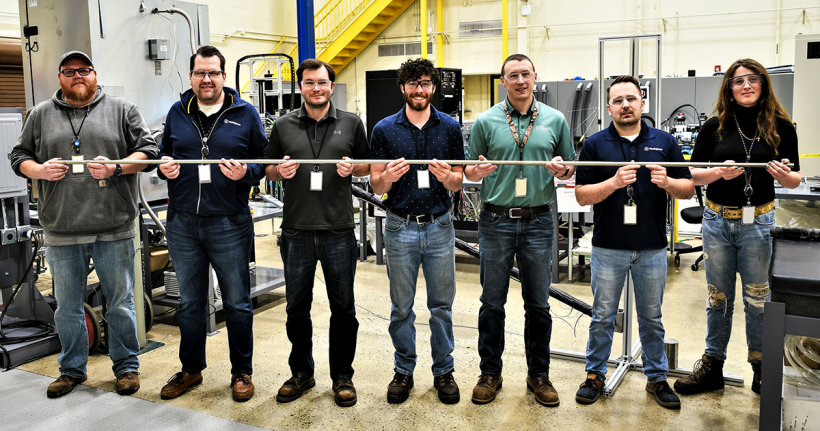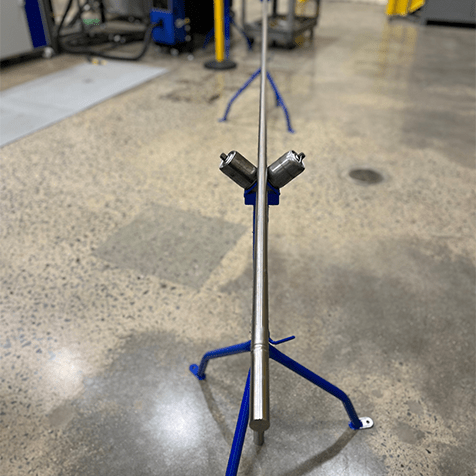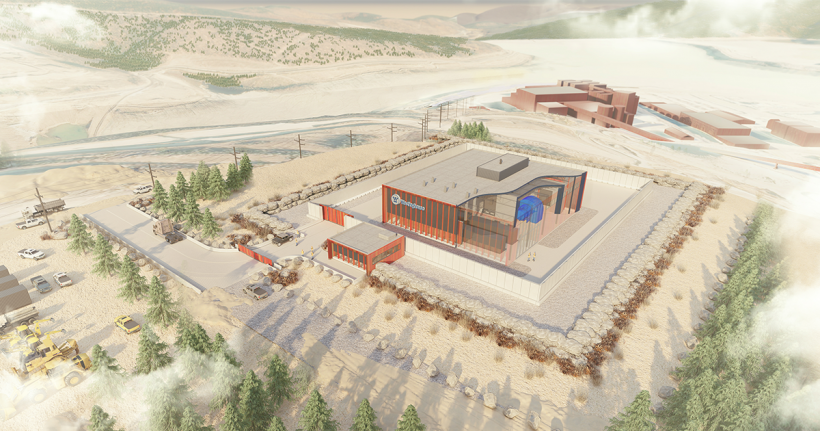
Westinghouse team members display a 12-foot heat pipe fabricated at their Waltz Mill facility in Pennsylvania.
Westinghouse Electric Company
Westinghouse Electric Company successfully manufactured a 12-foot heat pipe at their facility in Waltz Mill, Pennsylvania. The heat pipe is one of the largest of its kind ever built and will be used to support the Nuclear Test Reactor (NTR) that the company aims to operate in 2026.
The milestone is a key step forward in helping to develop Westinghouse’s transportable eVinci microreactor and is part of a $9 million cost-share project supported through the U.S. Department of Energy’s Advanced Reactor Demonstration Program (ARDP).
Scaling Up the Process
Heat pipes are long, thin tubes which passively transfer thermal energy from one end of the tube to the other.
Westinghouse intends to use these components in their eVinci microreactor and applied ARDP funding to help design and prototype the 12-foot heat pipe.
Prior to the upgrade, the company was manufacturing and testing heat pipes at a 4-foot scale.
The heat pipes are made of a specialized iron, chromium, and aluminum alloy engineered for superior heat resistance and performance.
Westinghouse will manufacture hundreds of 12-foot heat pipes to transfer heat away from the NTR fuel.
The data collected by NTR will be used to inform the design of the eVinci microreactor that will be operational at commercial sites within the decade.
"As we look to achieve deep decarbonization, delivering clean energy to industries and communities that now rely on diesel fuel is vital,” said Mike Shaqqo, senior vice president for Advanced Reactor Programs at Westinghouse. “We appreciate the support from the Department of Energy to advance innovative solutions such as eVinci.”
The eVinci Micoreactor

12-foot heat pipe manufactured by Westinghouse.
Westinghouse Electric Company

Westinghouse eVinci microreactor plant rendering
Westinghouse Electric Company
Westinghouse is developing the eVinci microreactor that will use robust TRISO fuel and a fully passive heat pipe-cooled design to flexibly operate on grid and at off-grid locations, such as mining sites and remote communities.
It’s one of several advanced reactor designs being supported through ARDP to help accelerate the development and deployment of new reactor technologies.
The company is currently working with Texas A&M, along with Los Alamos and Idaho national laboratories to analyze and test components for its heat pipe and novel moderator in order to develop the NTR by 2026.